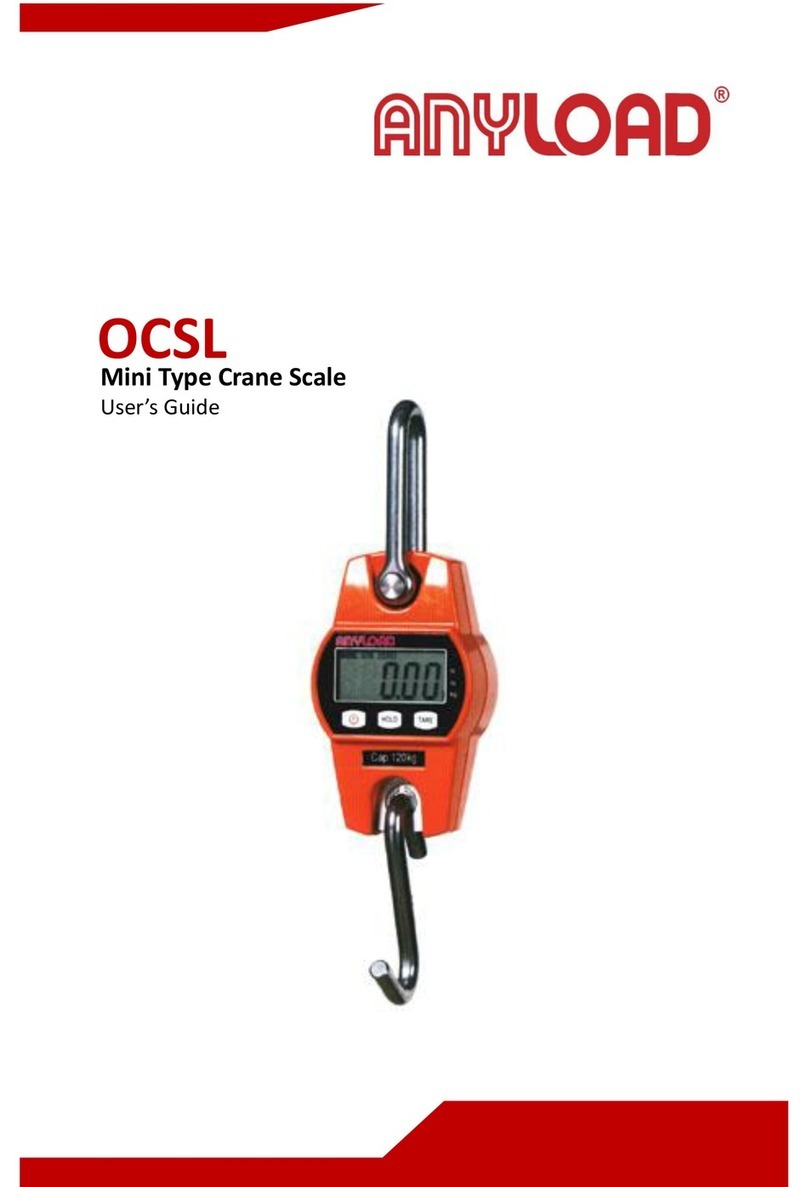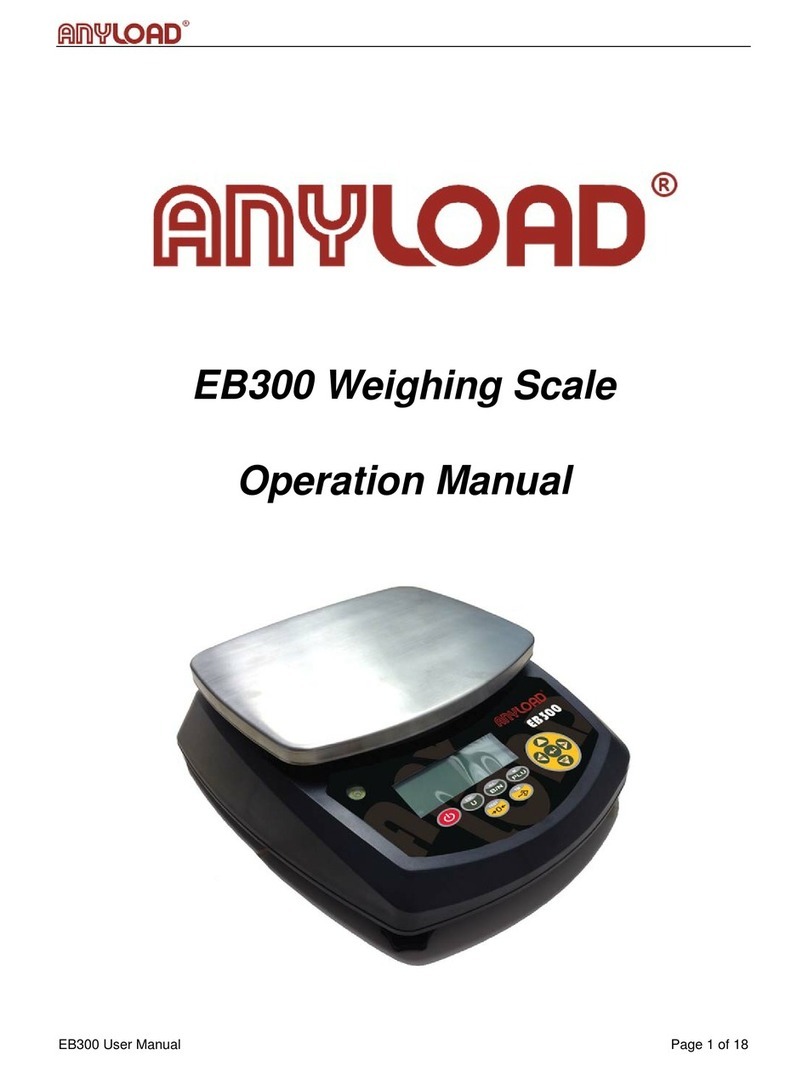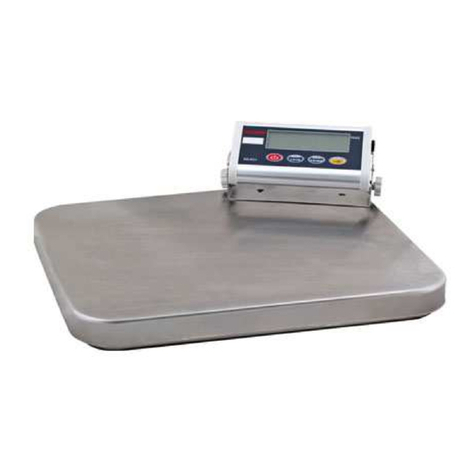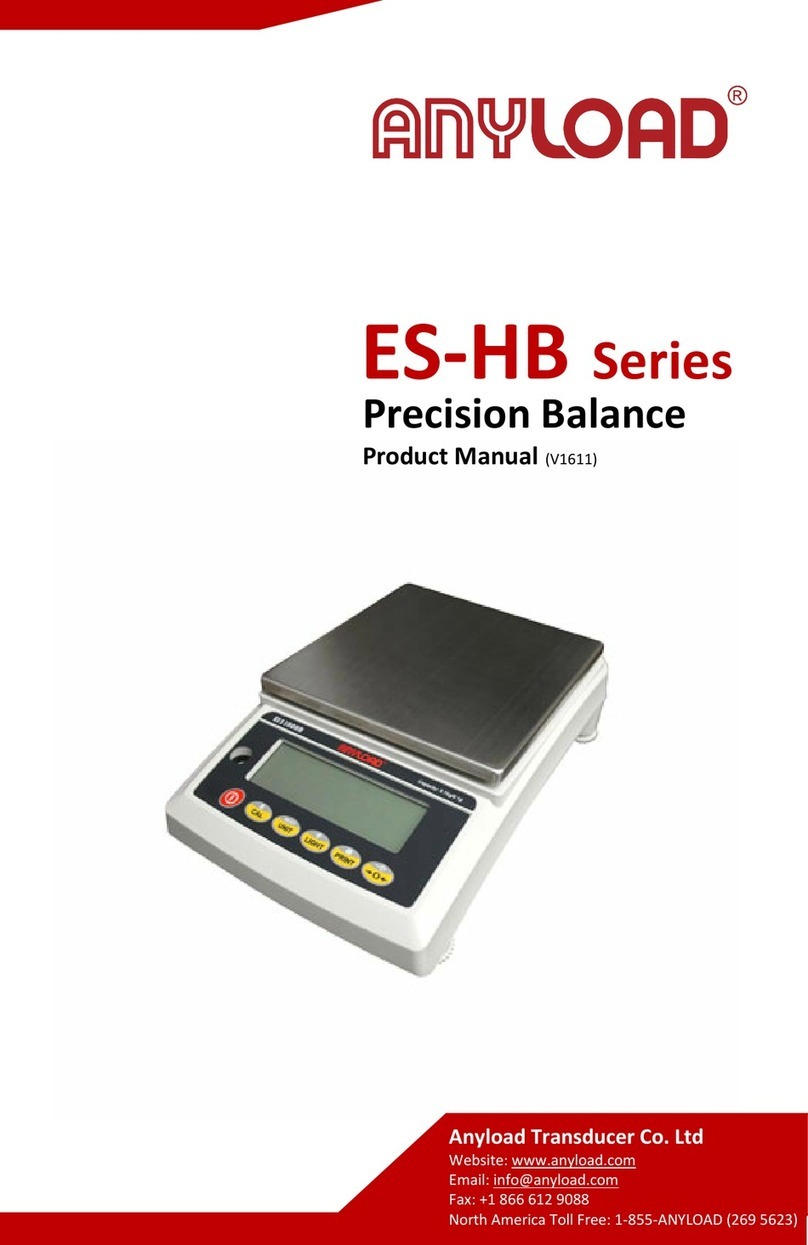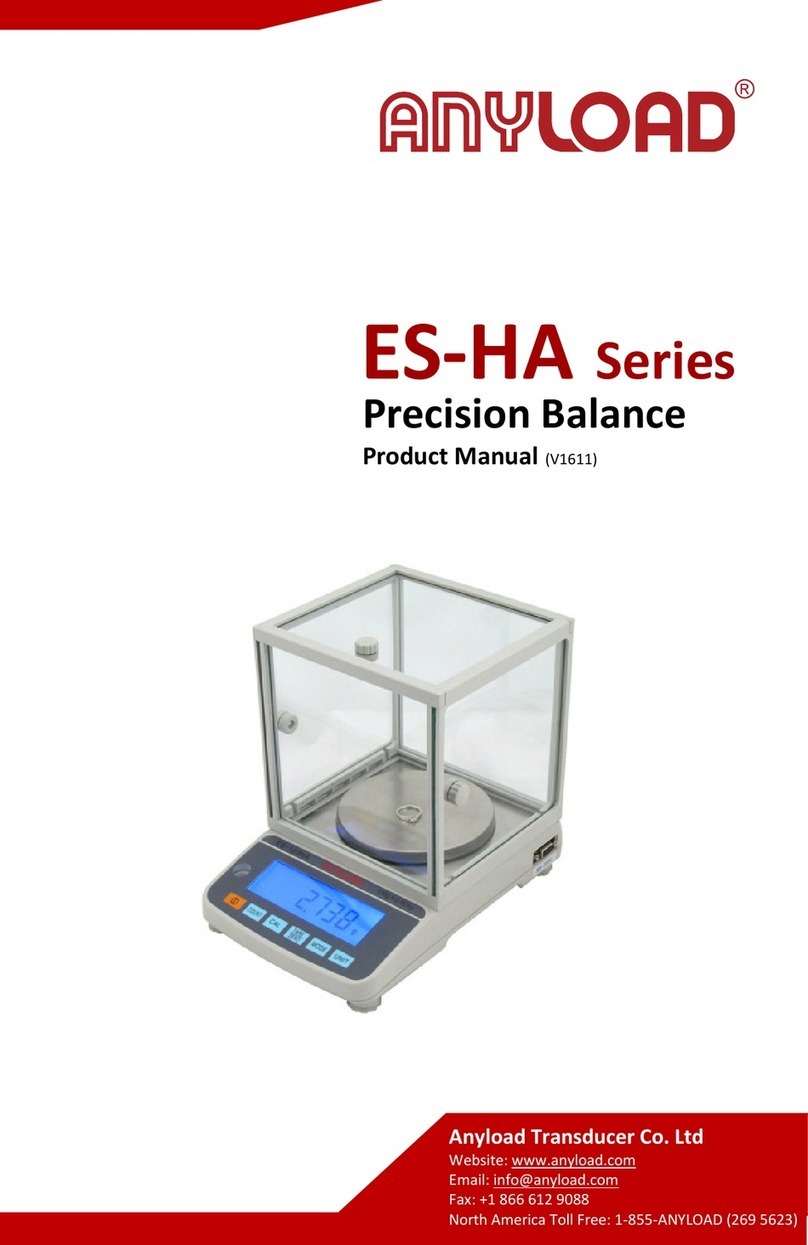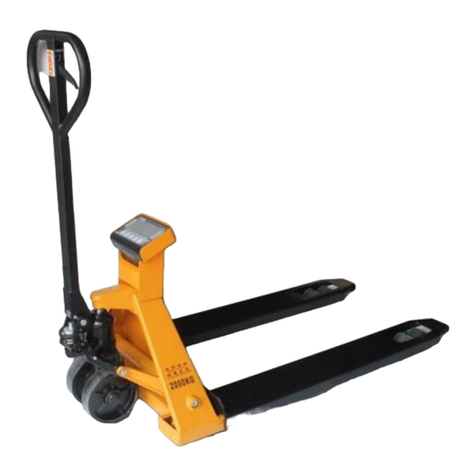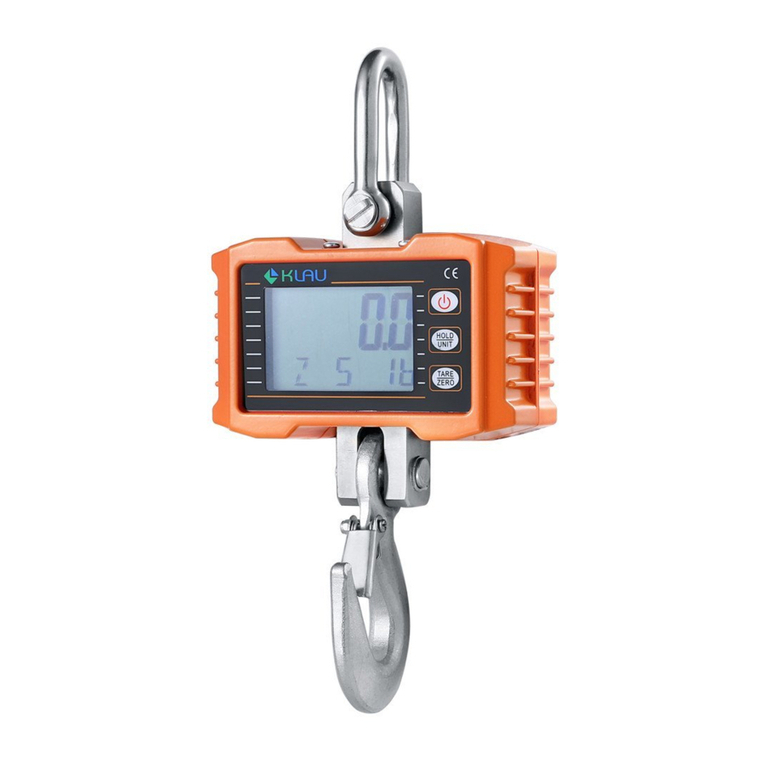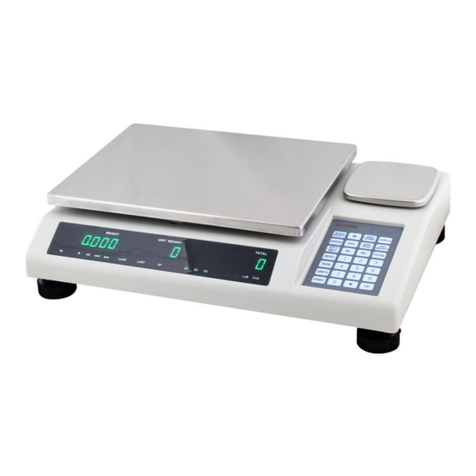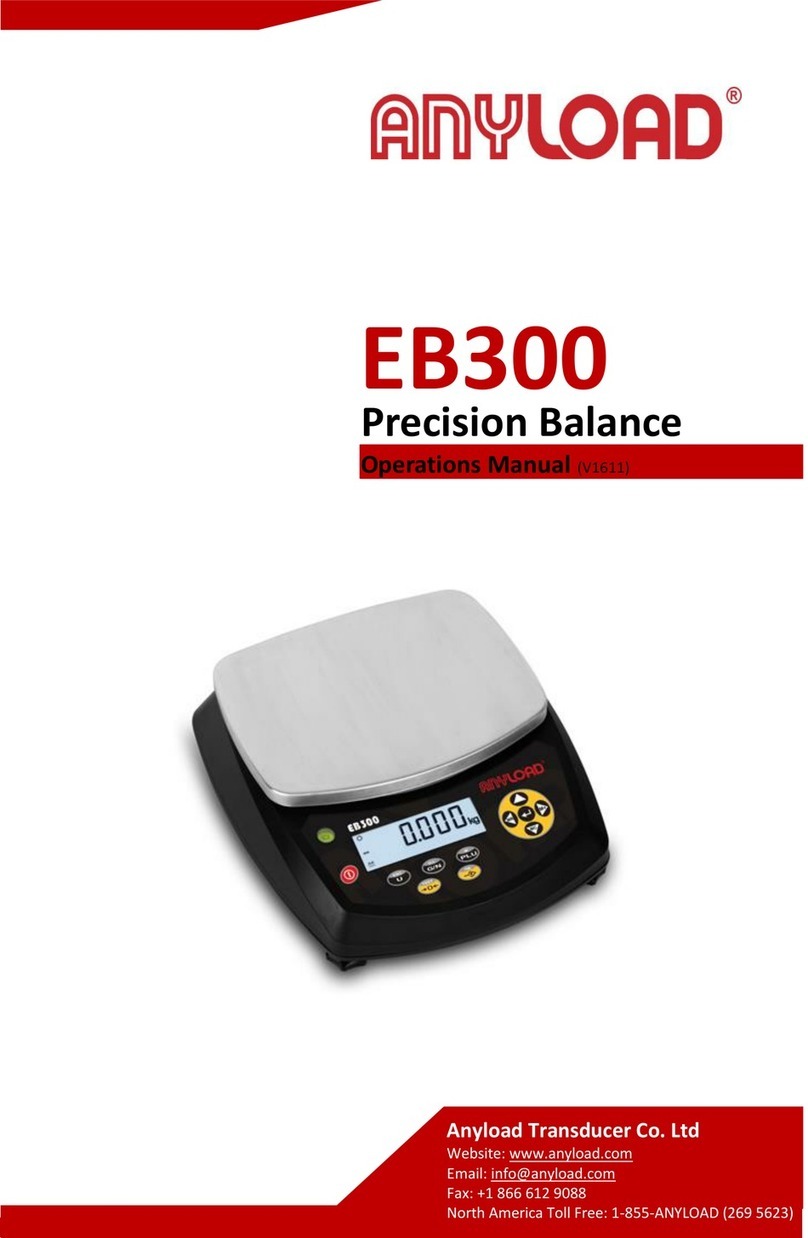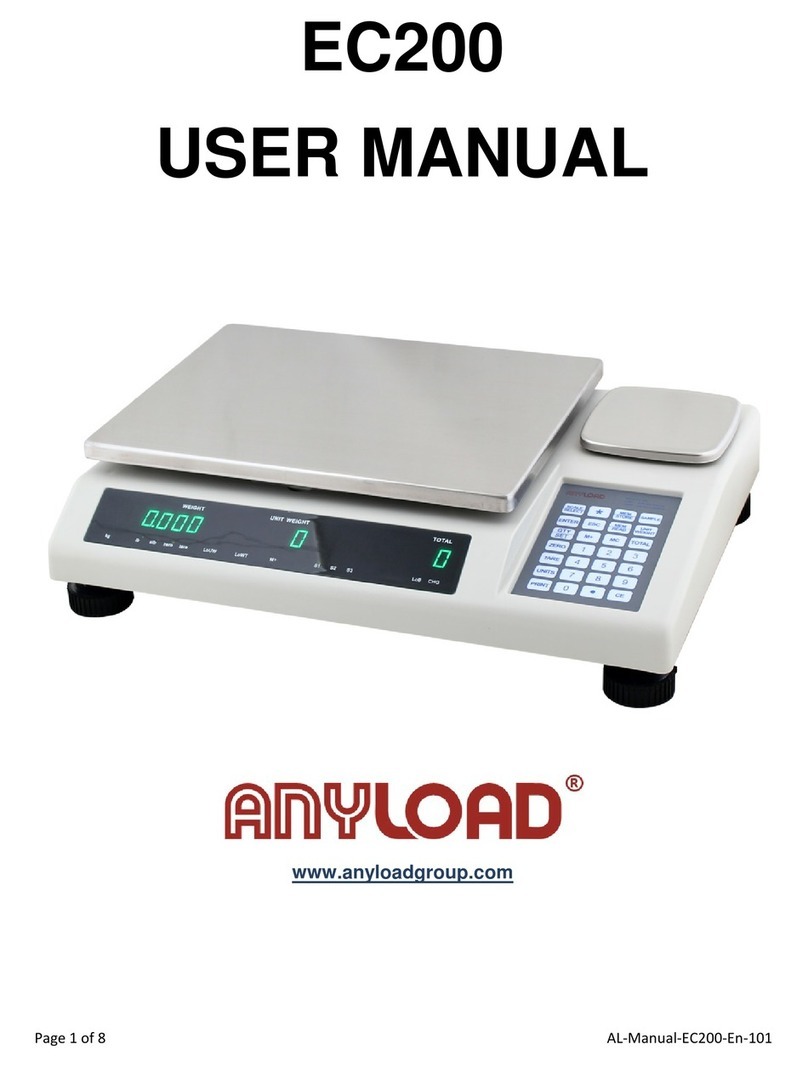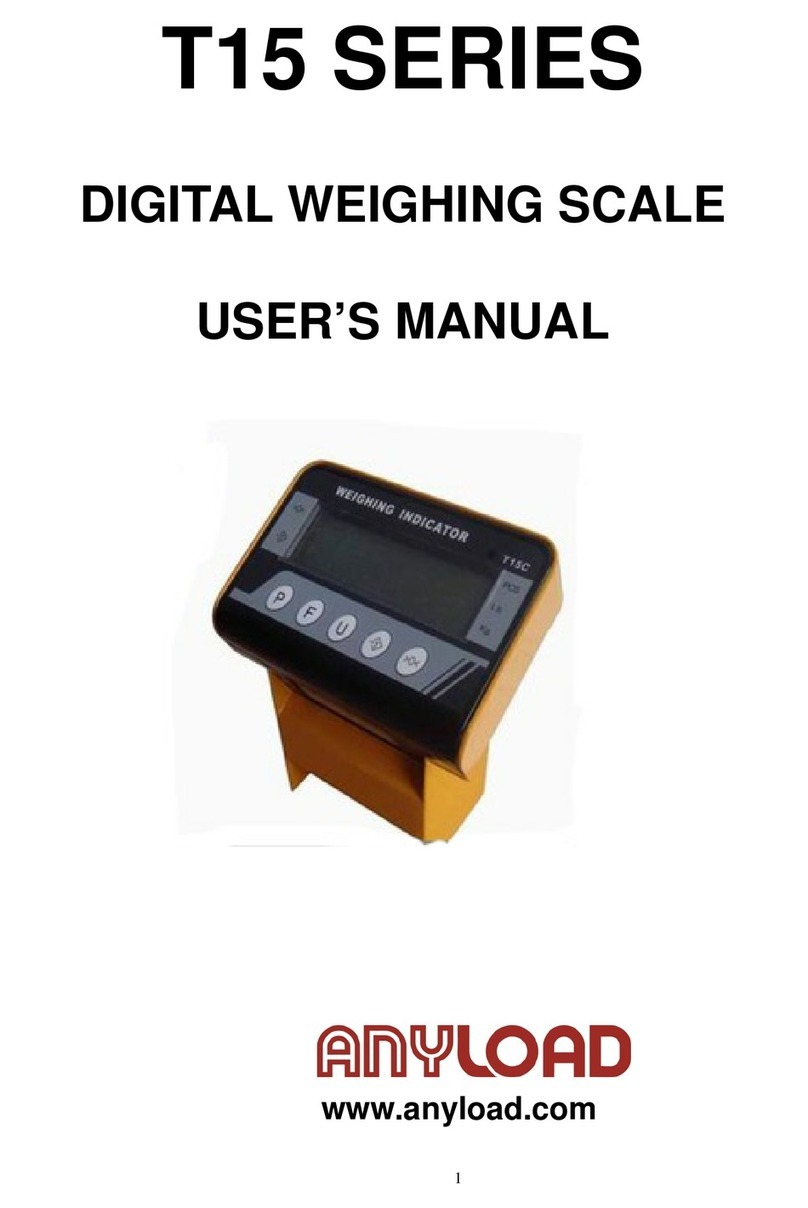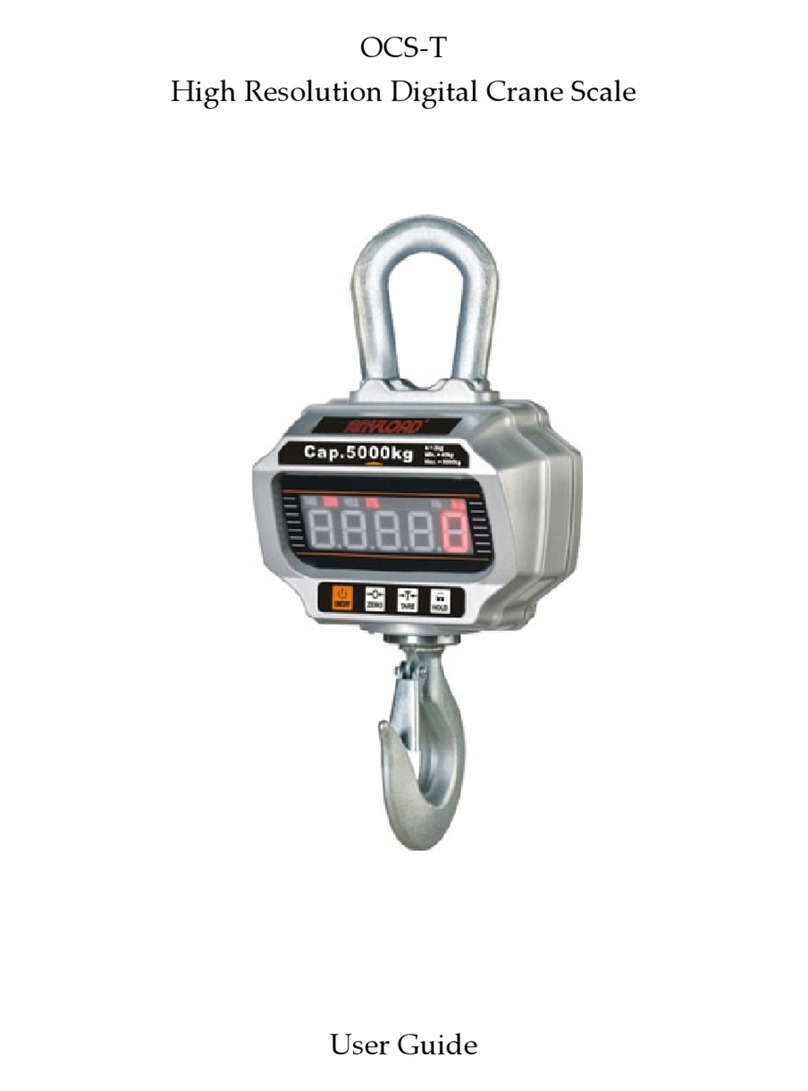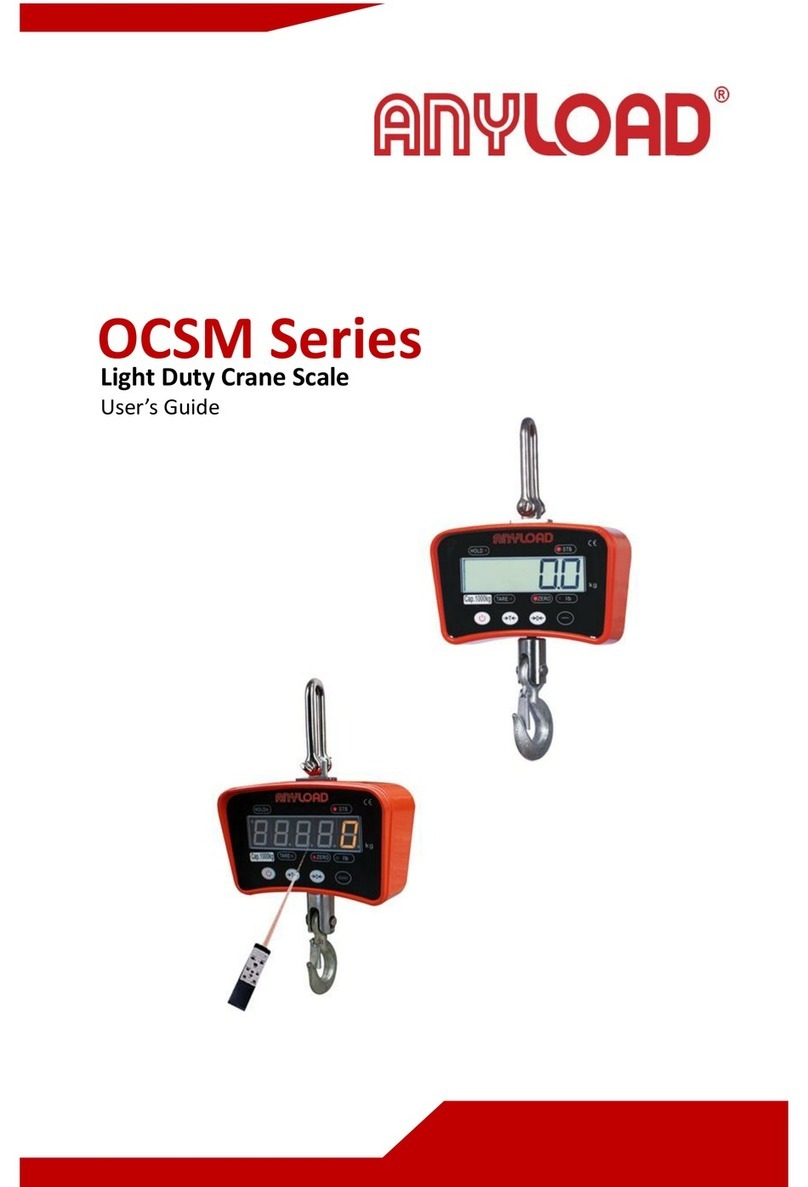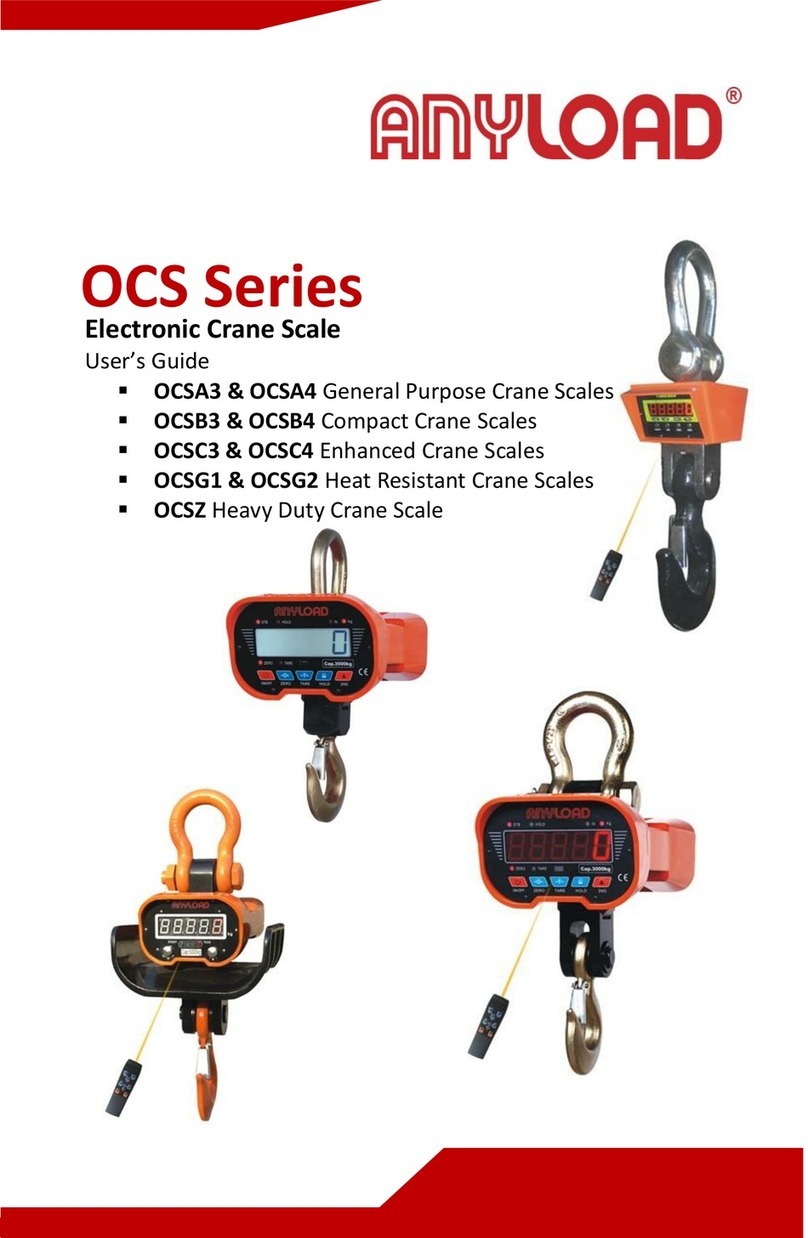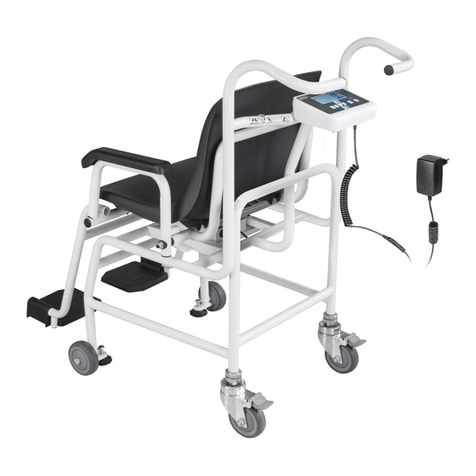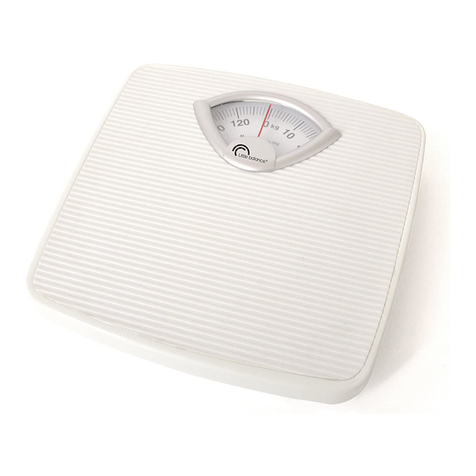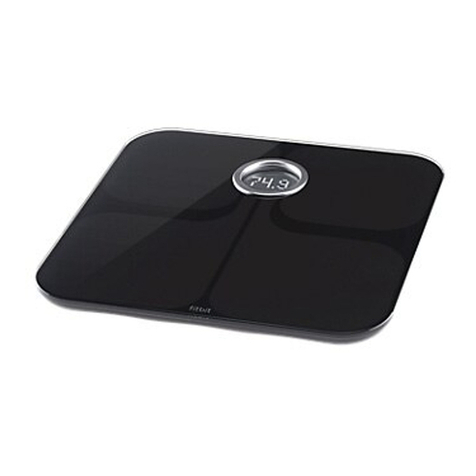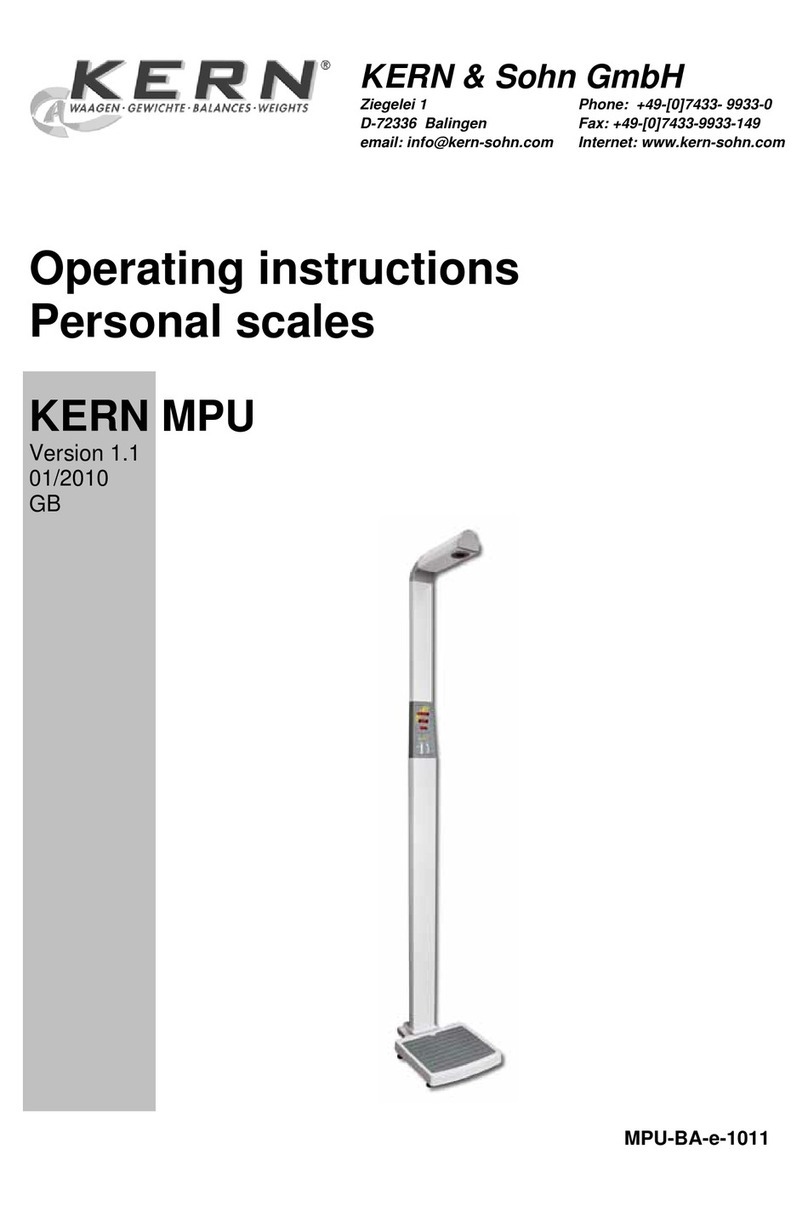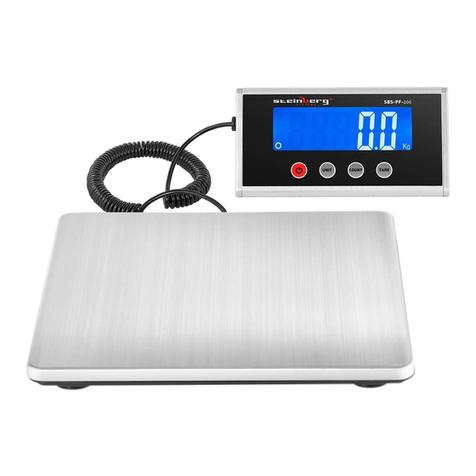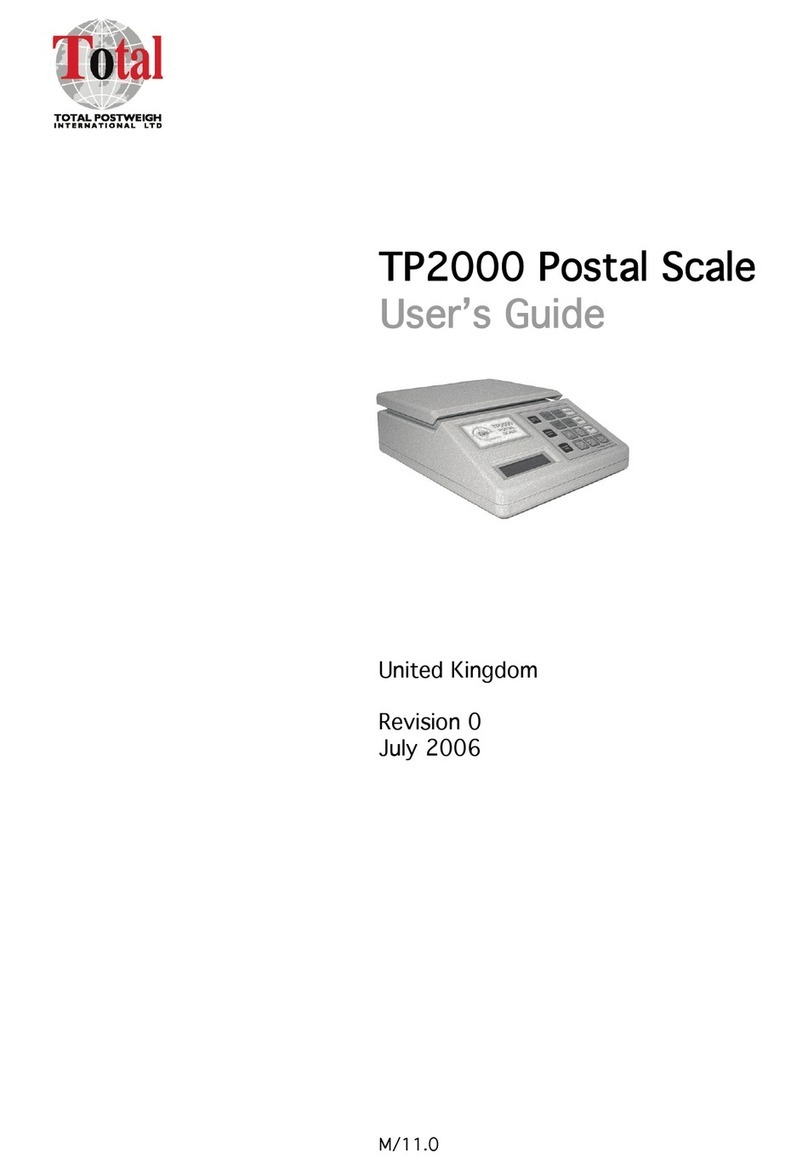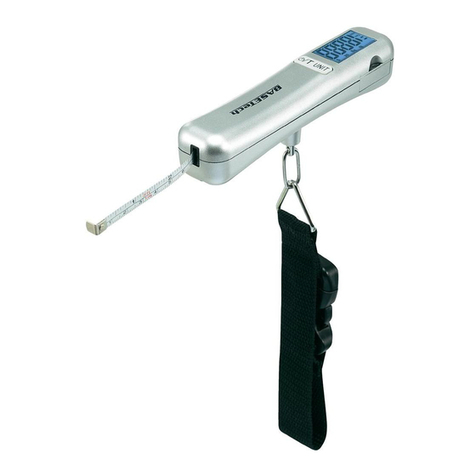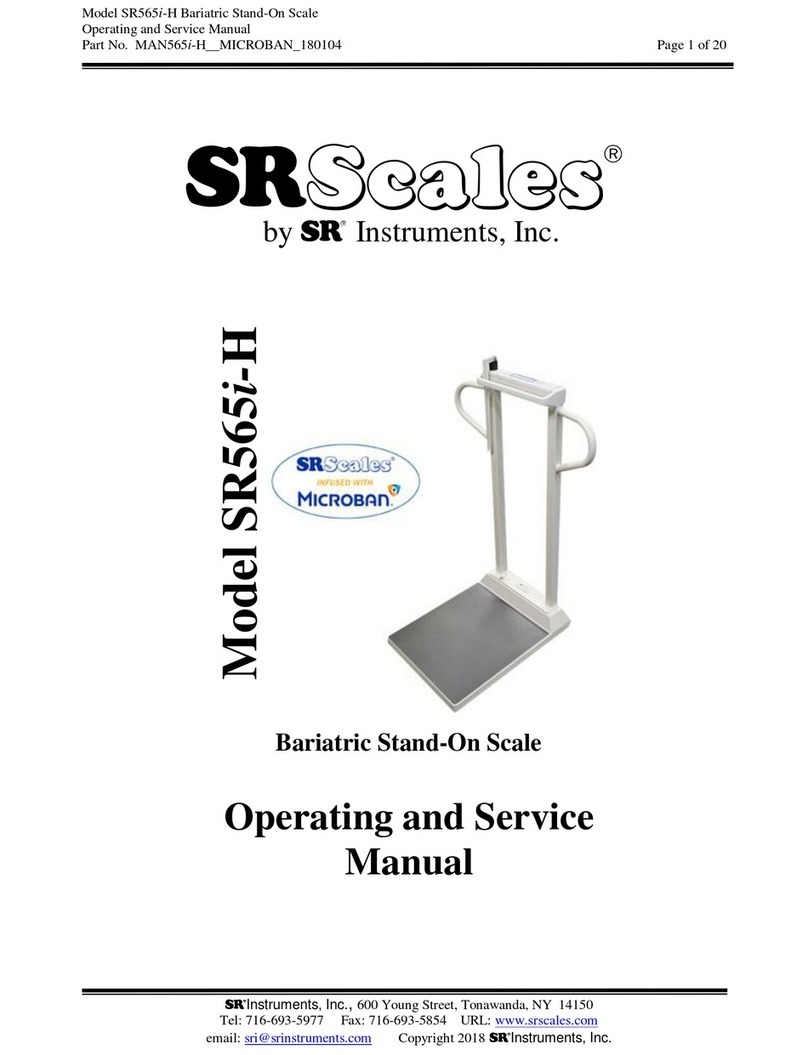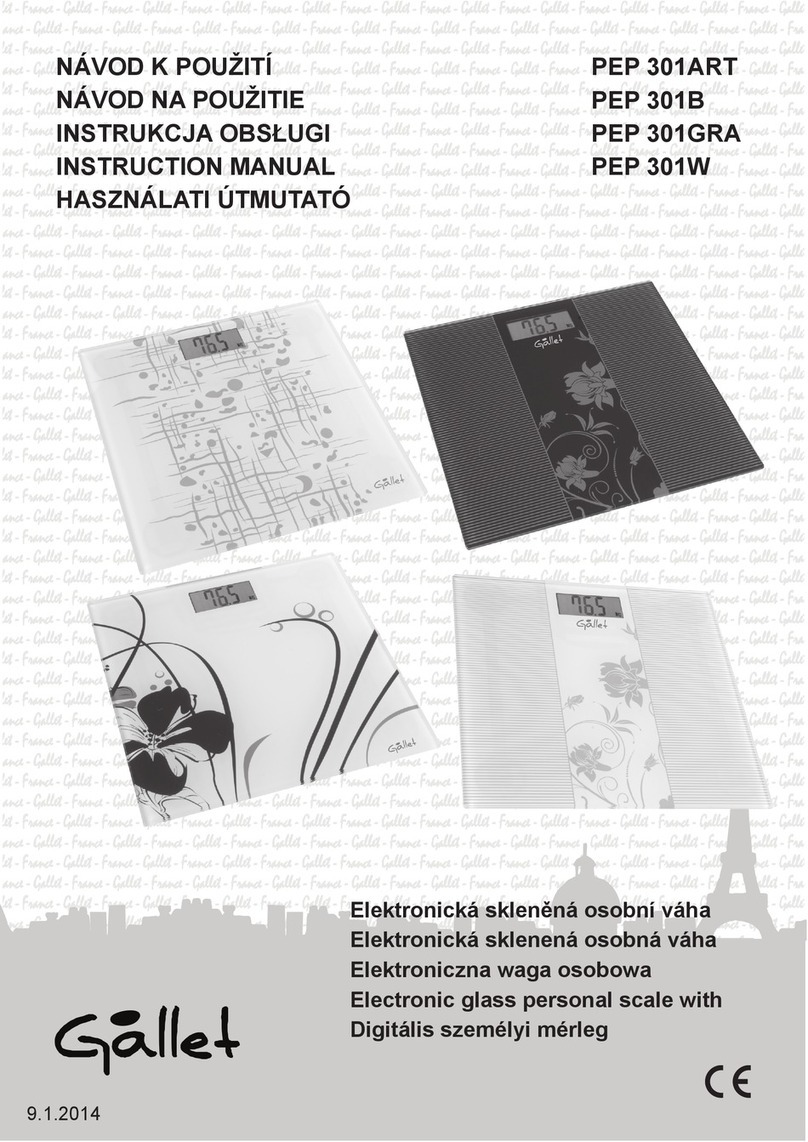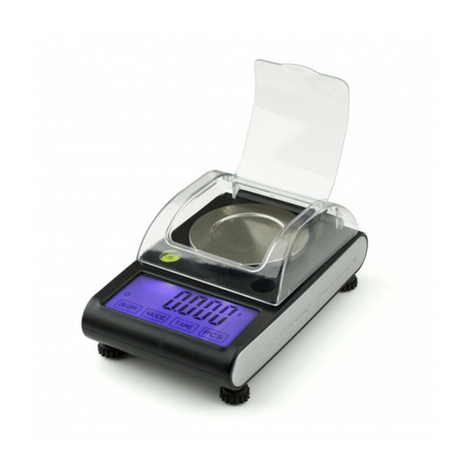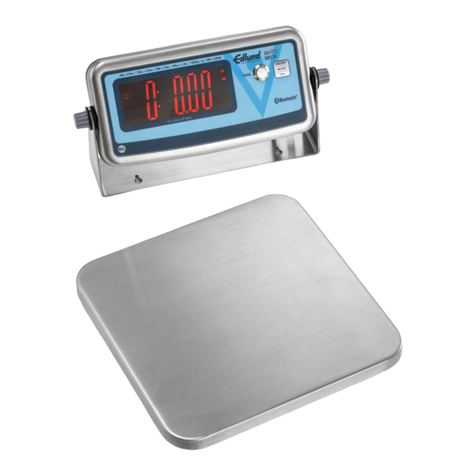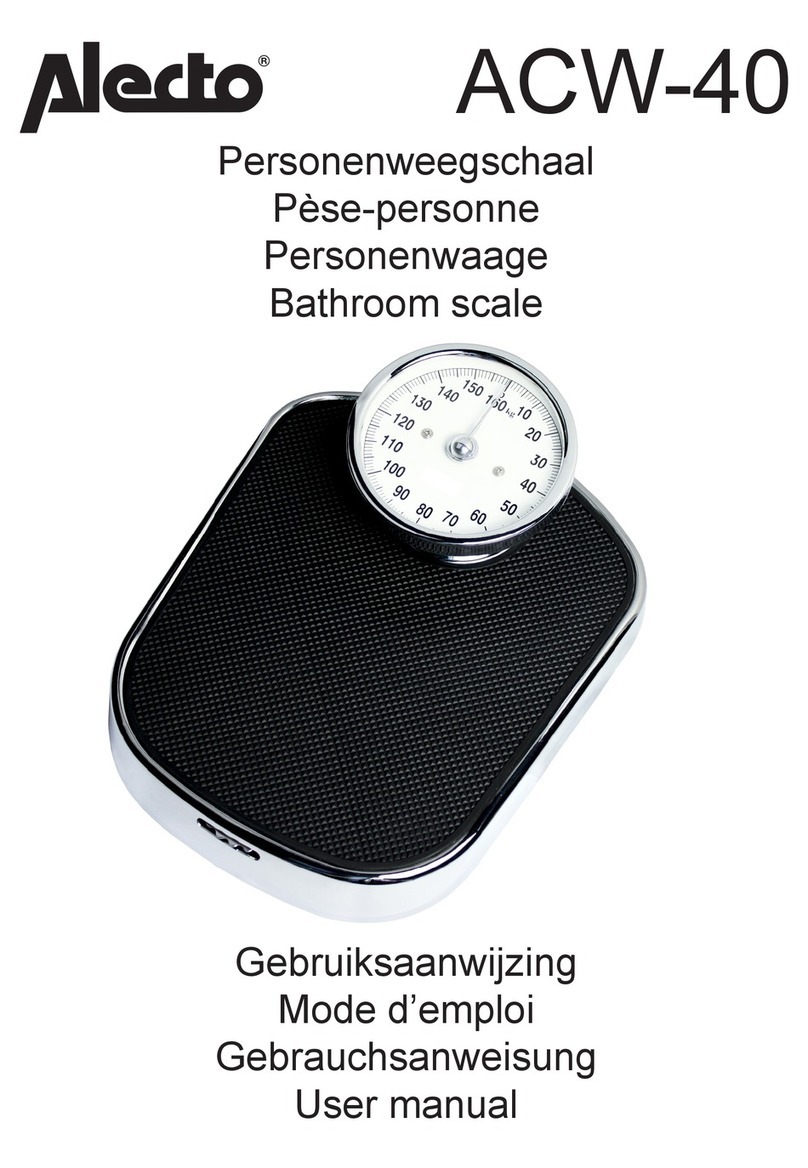
6 | A N Y L O A D E B 1 0 0 / E B 2 0 0 M a n u a l ( V 0 1 1 6 )
ZERO track function setting display shows ZRT x.x,press [UNIT] key to select ZERO track
time(05. to 4.0 seconds, press [ZERO] key to enter ZERO setting,display shows RZD
XXX, press [UNIT] key to select ZERO value(0.8d-1.8d-2.8d-3.8d), press [ZERO] key to
enter FIL setting, press [UNIT] key to select filter range amend (0-1-2-3-4-5-6-7), “2” is
default setting, press [ZERO] key to select zero range when turn on the scale, press [UNIT]
key to select percent (PZR 2, PZR 5, PZR 10. PZR 20), press [ZERO] key to set zero range,
press [UNIT] key to select percent.
7. Counting procedures
7.1 Press [ON/OFF] to turn on the scale.
Wait for "0" to appear on the display.
7.2 Start the Count Procedure
If necessary, press [ZERO] key to set the display to “0”.
7.3 Press the [PCS] key to put the scale in PCS mode, the display will show P=X X, press UNIT
to select XX value (10 20 50 100). Place a given number of samples of an item on the pan
(the Sample Size should be either 10、20、50 or 100 pieces). The weight of these samples
will show on the display.
7.4 Press the [PCS] key, the display will show “XX pcs”, then the scale will recall the sample size
you selected and show the starting sample size on the display (you can now remove the
samples if you want to return the scale to 0).
7.5 Press the [PCS] key to return to the weighing mode.
8. CALIBRATION
8.1 When to calibrate
Calibration may be required when it is initially installed, if the scale/balance is moved a
substantial distance. This is necessary because the weight of a mass in one location is not
necessarily the same in another location. Also, with time and use, mechanical deviations may
occur.
8.2 How to calibrate
8.2.1 Before entering calibration mode, there is a switch key on the bottom of the scale. Turn
on the switch key first, press [ON/OFF] to turn the power on for 1minutes.
8.2.2 Enter calibration mode
Press [ON/OFF] to turn the power on, the display will show flash digits and then “-------
-”, Press [ZERO], the display will show “CAL” , Press [ZERO] again , the display will
show “X0000 CAL”, Xis flash digit. Press [UNIT] key the flash digit will move to right.
Press [PCS] key to increase the flash digit. (X is the calibration weight which can
be set according to your requirement).
8.2.3 Calibration by the weight
Select the calibration weight. Then place the calibration weight on platform. Then
press [ZERO] key,the display returns to the weight value. Now the calibration is
complete.
8.2.4Press [ON/OFF], turn off the power, press [ON/OFF] to turn on the power again. Place
the weight on the platform to make sure whether weighing is correct, if not, repeat steps
2-4.
8.2.5 Return to weighing mode
Press [ON/OFF] to turn the power off. Press [ON/OFF] again to turn on the power and
the scale/balance returns to the weighing mode.
